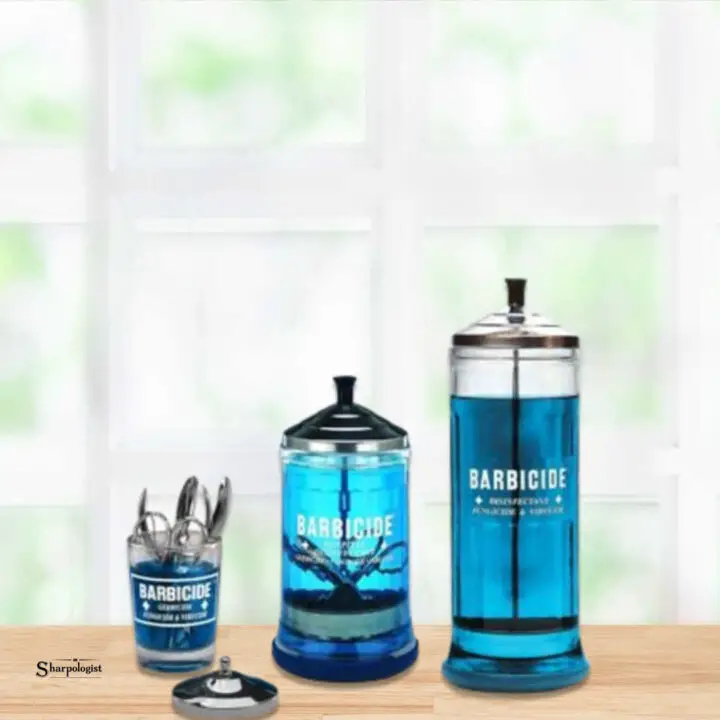
I was recently diagnosed with a serious liver disease. While researching the ins-and-outs of my condition I also learned more about related conditions. One related condition is hepatitis and I discovered that wet shavers should pay attention to a circumstance related to the “PIF Table” at wet shaving meetups (“PIF” means Pay-It-Forward, where shavers leave items they no longer want and pick up items from others).
What Is Hepatitis
Hepatitis is an inflammation of the liver, often caused by viral infections, but it can also result from other factors such as alcohol use, toxins, medications, and autoimmune diseases.
Types of Hepatitis:
- Viral Hepatitis – Caused by viruses:
- Hepatitis A (HAV): Spread through contaminated food or water; usually resolves on its own.
- Hepatitis B (HBV): Transmitted through blood, sexual contact, or from mother to baby; can be chronic.
- Hepatitis C (HCV): Spread primarily through blood-to-blood contact; often leads to chronic liver disease.
- Hepatitis D (HDV): Requires HBV infection to occur; more severe than HBV alone.
- Hepatitis E (HEV): Transmitted through contaminated water; common in developing countries.
- Non-Viral Hepatitis – Caused by other factors:
- Alcoholic Hepatitis: Resulting from excessive alcohol consumption.
- Toxic Hepatitis: Due to exposure to drugs, chemicals, or toxins.
- Autoimmune Hepatitis: When the immune system mistakenly attacks the liver.
Hepatitis B (HBV) and hepatitis C (HCV) can potentially be spread through wet shaving if proper hygiene and sterilization practices are not followed. The primary risk comes from blood-to-blood transmission, meaning if an infected person’s blood contaminates a razor or shaving brush, it could potentially infect another person if the contaminated tool is reused.
How Hepatitis Can Be Spread Through Wet Shaving

- Shared Razors – If a person with hepatitis uses a razor and it cuts their skin, the blood may remain on the blade. If another person uses the same razor, even microscopic blood traces can transmit the virus.
- Shaving Brushes – While less likely, if an infected person bleeds into a brush and it is not properly disinfected, there is a small risk of transmission.
- Nicks & Cuts – Since wet shaving often leads to minor nicks and cuts, any blood exposure increases the risk.
- Barber Shops & Salons – If razors or straight razors are not properly sanitized between customers, there is a risk of HBV or HCV transmission.
Which Hepatitis Viruses Are a Concern?
- Hepatitis B (HBV): Can survive outside the body for up to 7 days on contaminated surfaces, making razors a potential risk.
- Hepatitis C (HCV): Can survive outside the body for several hours to a few days, with a small but real risk if blood is present on shared razors.
- Hepatitis A & E: These are primarily spread through contaminated food or water, not through shaving.
How to Prevent Hepatitis Transmission in Wet Shaving:
- Do not share razors or shaving brushes – Always use your own personal shaving tools.
- Proper sterilization at barbershops – Ensure barbers disinfect straight razors and other tools properly using barbicide, autoclaves, or UV sterilization.
- Use disposable razor blades – If using a “Shavette” or “barber straight” razor, ensure a new blade is inserted for each shave.
- Disinfect razors at home – Rinse with hot water, alcohol, or barbicide after each use.
- Handle nicks & cuts carefully – If you cut yourself, rinse with antiseptic and avoid contact with others.
How to Properly Disinfect Razors to Prevent Hepatitis and Other Infections

To minimize the risk of hepatitis B, hepatitis C, and bacterial infections, it’s important to properly clean and disinfect razors—whether for personal use or in a barbershop setting.
Disinfecting Razors at Home
If you use a safety razor, straight razor, or cartridge razor, follow these steps:
Daily Cleaning Routine (After Each Shave)
- Rinse with Hot Water: Run the razor under hot water (above 140°F/60°C) for at least 30 seconds to remove soap, hair, and debris.
- Use an Antiseptic Solution:
- Dip the razor in 70% isopropyl alcohol or hydrogen peroxide for 30–60 seconds to kill bacteria and viruses.
- Alternatively, use a barbicide solution (common in barbershops).
- Dry Completely: Moisture promotes bacteria growth. Shake off excess water and store in a dry place.
Deep Cleaning (Once a Week or After a Cut/Nick)
- Remove the Blade (if applicable) – For safety razors and straight razors, take out the blade before cleaning.
- Scrub with Soap & Brush – Use a soft toothbrush and antibacterial soap to clean the razor handle, head, and any crevices.
- Soak in Disinfectant – Immerse the razor in:
- 70%+ isopropyl alcohol for 5–10 minutes
- Barbicide disinfectant for 10 minutes (for straight razors)
- Boiling water (5 minutes) – Only for metal razors, not cartridge razors
- Dry and Store in a Clean Area – Avoid humid environments like the shower.
Can UV Sterilizers Be Used?
UV sterilization boxes can be an additional method to kill viruses and bacteria but should be used alongside chemical disinfectants, not as a replacement.
Replacing Razor Blades
Change blades immediately if:
- The blade feels dull or tugs at hair.
- You cut yourself.
- The blade shows rust or buildup.
🚫 Never share razors—even with family members!
Symptoms of Hepatitis:
- Fatigue
- Jaundice (yellowing of skin and eyes)
- Nausea and vomiting
- Abdominal pain
- Dark urine and pale stool
- Loss of appetite
- Fever
Treatment and Prevention:
- Hepatitis A & E: Usually resolve on their own; vaccines available for HAV.
- Hepatitis B & C: Antiviral medications can help manage and sometimes cure HCV.
- Hepatitis D: Managed by controlling HBV.
- Prevention: Vaccination (for HAV and HBV), avoiding risky behaviors (unprotected sex, sharing needles), and practicing good hygiene.

Hello, Mark.
I am sorry to read about your medical issue. You have my full support. Right away, you are on the “mark” about hepatitis for your readers. Please follow your doctor’s medical advice to the T.
I did not knoow about “PIF” and the involvement with sharing. You are on the prayer list here at my home.
Dartan
Hello Mark,
i’m truly, truly sorry about your health’s problem and I hope everything will be fine for you.
I’ve been following you since 2020 and I learned a lot about wet shaving’s world because of you and your articles.
Sharpologist was and it is a precious source of infos about what’s going on in the wet shaving’s world and a treasure of infos about the safety razors past.
Your comments, articles and advices really helped me a lot to understand and learn more and more about our common passion.
Please, don’t leave us alone!!!
wishing you the very best.
Gianguido D’Anna ( Italy).
Thank you!